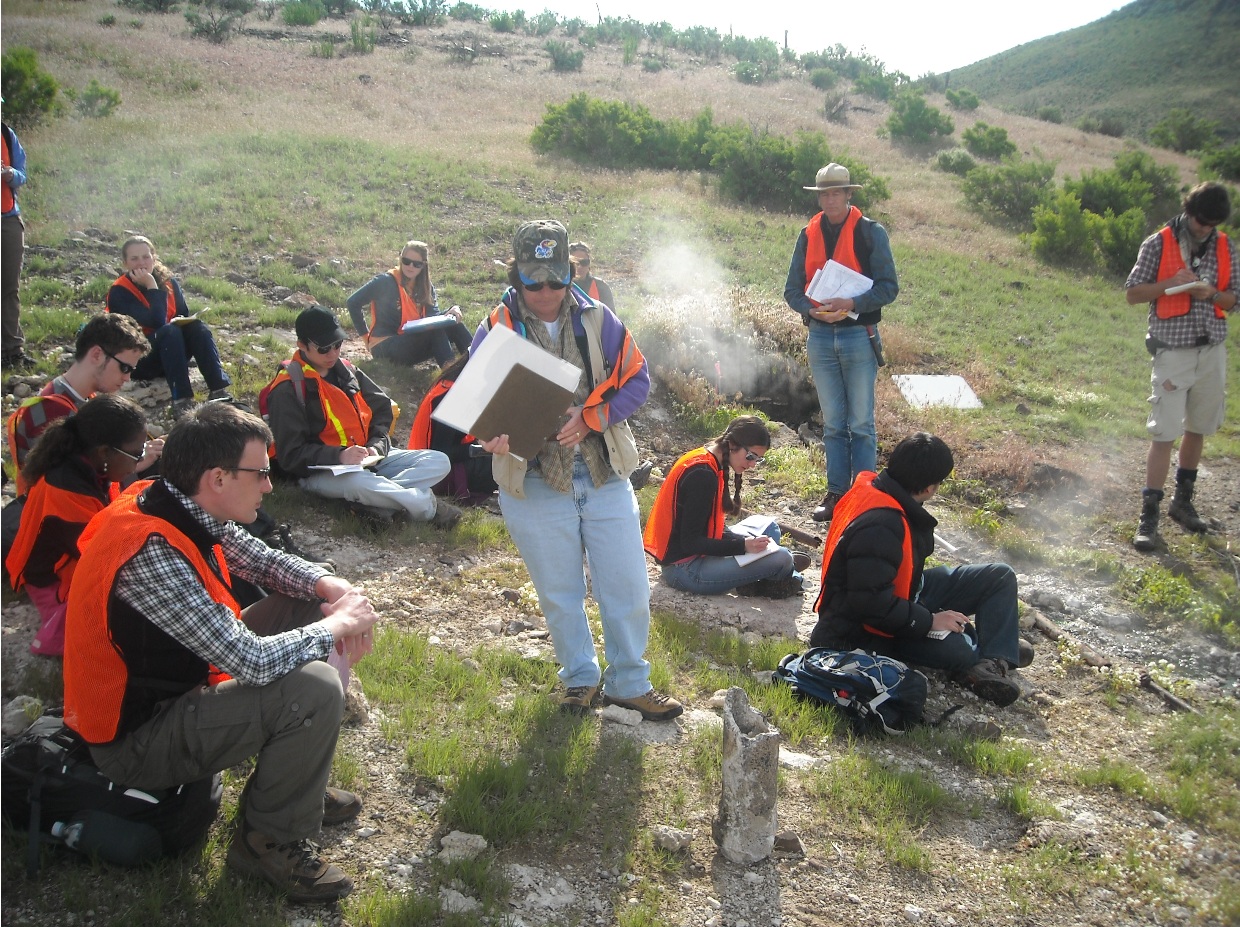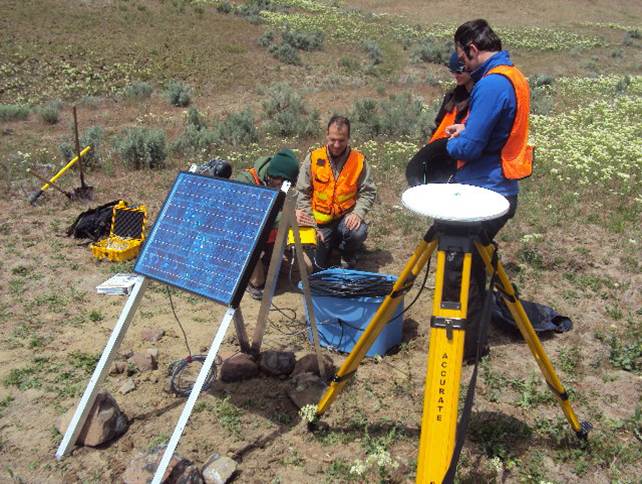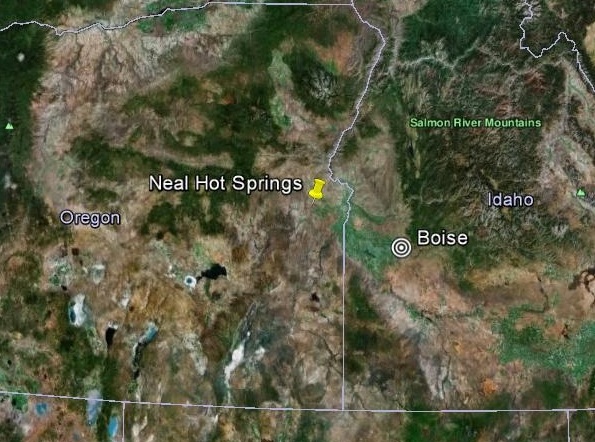Project Information
In May and June of 2011, the annual geophysics field camp was centered on the Neal Hot Springs area, where US Geothermal is preparing for geothermal power generation. Visit their site (U.S. Geothermal) for more information and pictures.
The study area is located in an arid area of eastern Oregon in a setting of complex and intersecting fault trends. A succession of basin fill sediments and intercalated lava flows have been repeatedly broken by episodes of basin formation and extensional faulting. This subsidence and deformational history has resulted in a complex map pattern of intersecting faults and fault blocks comprised of inter-layered sedimentary rocks and lava flows. Within this realm, the most recent faulting appears to have defined a down-faulted half-graben with a basin fill of Late Miocene lacustrine strata faulted against a heavily silicified and brecciated NW-SE striking normal fault. This fault zone is deeply dissected by Cottonwood and Bully creeks. Where the commingled streams cross the fault, defining the lowest exposure in the area, there is a surface hot spring with temperatures approaching boiling. Extensive surface alteration and silicification suggest the hydrothermal system has been in place for a long time, perhaps millions of years.
The coincidence of the large catchment with ample water and the deep seated fault with its brecciated and permeable character provide a logical set of parameters that may serve to localize the hydrothermal system we see today.
Our geophysical investigations will be based on the hypothesis that cold meteoric waters arriving by regional drainage are saturating the fault zones in the area and that once waters have descended to depths of 1000 to 1500 meters, they will heat to almost boiling and rise through convection and emerge as hot springs.
For more information and a comprehensive report of the field camp please visit the links below.
Neal Hot Springs Field Camp Report
Neal Hot Springs Passive Network
Link to Colorado School of Mines Field Report


